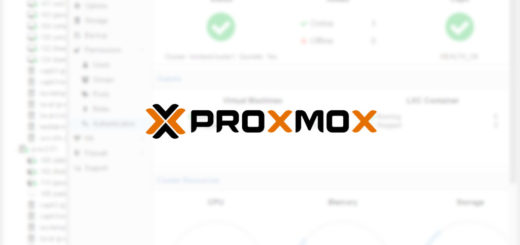Proxmox: manage your virtual machines like a pro!

Virtualization can be a difficult thing at times. Many variegated solutions, different technologies and platform-specific procedures make virtualization difficult to grasp for beginners. Proxmox VE is an open source server virtualization software that provides enterprise-class features behind an easy-to-use web interface.
Proxmox Virtual Environment introduction
DIY enthusiasts, homelab and homeserver owners love Proxmox, and there’s a reason why. When you have no experience in matters like virtualization, containerization and setting up such systems, enterprise solutions soon become daunting. Many people will consider VMware ESXi, which is free, but to get the most out of ESXi you will need a vSphere vCenter instance which is not free. And if vSphere is not a choice, the usual next-in-list is one and only: Proxmox VE.
Enterprise features, simplified
Proxmox is based on Debian and provides enterprise-class features like: clustering, fencing and LDAP integration, but these features don’t make Proxmox less easy. As a matter of fact you won’t even notice the presence of many of these features if you don’t need them. The installation process is as easy as installing a Linux distribution, and everything will work out of the box without the need to tinker around.
Clustering, virtualization and containers
Proxmox also scales out well: if installing a single node is easy, creating many nodes and managing multiple clusters is pretty simple compared to other solutions. Proxmox uses QEMU/KVM as hypervisor and also provides native containers support using LXC containers. These containers are lightweight compared to virtual machines and help reduce the costs by consuming less resources. Containers can be created using useful pre-built templates that you can easily download through the web UI.
A wonderful interface
Speaking of which, one of the greatest features of Proxmox is the Web User Interface. The web UI is a lightweight interface that allows the user to perform task on a specific node or cluster. The interface also allows administrators to set up fine-grained permissions over virtual machines, containers, cluster, groups etc.
Proxmox features
- Easy to Deploy, Manage, Scale.
- Nifty, lightweight Web UI.
- Free and Open Source.
- Subscription option available.
- Uses KVM to allow hardware-assisted virtualization. (Although it doesn’t use libvirt, sigh)
- Uses LXC containers for lightweight operating-system virtualization.
- Integration with popular directory services like LDAP and ADS.
- Support for HA with fencing.
- Live snapshots (depends on the underlying technology).
- Support multiple storage backends (LVM, ZFS, iSCSI, RBD, GlusterFS).
- In-built firewall.
- Supports scheduled backups (and restores, of course).
- Integrates well with Ceph.
- Support for live migrations.
- Fine-grained permissions.
Conclusion
With Proxmox VE, you can virtualize both Windows and Linux guest (other operating systems are not tested, but will probably work). The flexibility offered by this solution allows large clusters to be deployed with HA and live migrations in place, and with Ceph integration, experienced administrator may bake their own hyper-converged infrastructure. The support for multiple storage and authentication backends makes it easy to integrate Proxmox with existing environments.
- 2020 A year in review for Marksei.com - 30 December 2020
- Red Hat pulls the kill switch on CentOS - 16 December 2020
- OpenZFS 2.0 released: unified ZFS for Linux and BSD - 9 December 2020




















Recent Comments